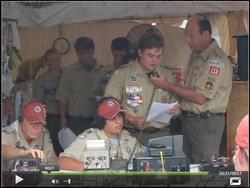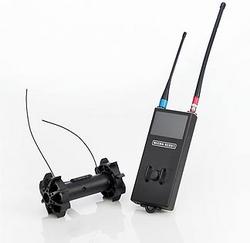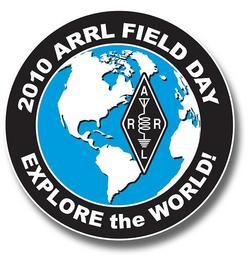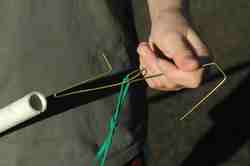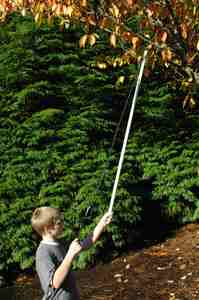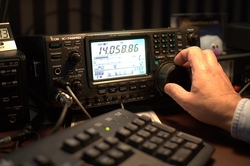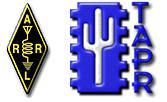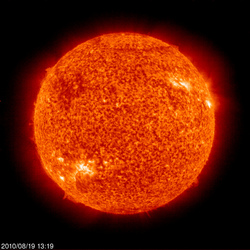 August 19, 2010 John E. Ross, KD8IDJ, Editor
| |||||||||
+ Available on ARRL Audio News + Amateur Radio and Scouting: K2BSA -- Amateur Radio Fun in the Warm Virginia Sun
The 2010 National Scout Jamboree -- celebrating the 100th anniversary of the Boy Scouts of America -- was held July 26-August 4 at Fort AP Hill in Virginia. According to ARRL Rocky Mountain Division Director and K2BSA Station Coordinator/Manager Brian Mileshosky, N5ZGT, ham radio was a big part of the event that attracted more than 43,000 participants from across the nation and around the world. Read more here. + FCC: ARRL Amends Petition to Deny to Include 16 Additional Recon Scout Applications
On August 16, ReconRobotics -- in response to the ARRL's Petition to Deny Applications , filed with the FCC on August 4 -- filed an Opposition to Petition to Deny with the FCC, arguing that the ARRL's Petition is "frivolous." The ARRL's Petition asked the FCC to deny 68 pending Public Safety Pool license applications associated with the ReconRobotics Video and Audio Surveillance System, specifically the Recon Scout device. The Salina (Kansas) Police Department had asked the FCC for a waiver to operate the Recon Scout in the band 433-445 MHz. The FCC returned the waiver request to Salina, noting that the frequency band requested was not consistent with the waiver Order that requires that the first unit licensed to an eligible entity operate in the 436-442 MHz band. Read more here. + On the Air: 2010 Field Day Logs Posted
The 2010 Field Day logs received list has been posted. It includes all logs received -- applet, non-applet e-mail and paper. Any changes/corrections/missing inquires should be sent to ARRL Field Day Manager Dan Henderson, N1ND, via e-mail. + Hints and Kinks: Loop and Hook Skyhook Randy Quinton, WQ7Q, of Sammamish, Washington, sent us this idea for a quick emergency antenna. Contact Randy via e-mail for more information An emergency flexible antenna can greatly extend the performance of a handheld transceiver. The best attachment point to hang the antenna always seems just out of reach. This simple wire hook made from a coat hanger makes it easy to hang and retrieve the antenna.
Using about 18 inches of wire, bend a hook to match the attachment point. Below the hook, form a loop to which the antenna line is tied. Below the loop, bend a downward pointing V-shaped pin with a little elbow on the side to prevent the pin from slipping completely inside the lifting tube (see Figure 1). The hook is lifted by a tube or tube section attached to a pole. Tension on the antenna wire keeps the pin in the tube until the antenna has been placed. The antenna is retrieved by reversing the process (see Figure 2).
Quinton said he keeps a loop and a short section of PVC pipe with tape around in his emergency kit, using it to turn a broom or branch into a lifting pole. As always, don't hang an antenna on electrical wires or anyplace in the vicinity of power lines. Do you have an idea or a simple project that has improved your operating? Maybe you've taken something commonly found around the home and developed a ham radio use for it? Why not share your hints with fellow hams in "Hints and Kinks," a monthly column in QST. If we publish your hint, you will receive $20. Send your hints via e-mail or to ARRL Headquarters, Attn: "Hints and Kinks," 225 Main St, Newington, CT 06111. Please include your name, call sign, complete mailing address, daytime telephone number and e-mail address. + On the Air: Expanded Results for ARRL International DX SSB Contest Now Online
Expended results for the ARRL International DX SSB Contest are now available on the ARRL Web site. Find close to 100 pages packed with results from around the world and your ARRL Division, including line scores and lots of photos, graphs and charts. You can also read all of the interesting Soapbox comments from the participants and review the Top 10 in every category, tracked since the top of Solar Cycle 23. There were lots of new records set in this contest -- come see how an active Sun affects an all-band DX contest! + Technology: ARRL, TAPR Announce 29th Annual Digital Communications Conference
Aficionados of digital communications are gearing up for the 29th annual ARRL/TAPR Digital Communications Conference, September 24-26 near Portland, Oregon. The ARRL/TAPR DCC is an international forum for radio amateurs to meet, publish their work and present new ideas and techniques. Presenters and attendees will have the opportunity to exchange ideas and learn about recent hardware and software advances, theories, experimental results, and practical applications. Read more here. + Solar Update
Tad "For shame the Sun will never show himself" Cook, K7RA, reports: Sunspot numbers and solar flux declined this week, with the average daily sunspot numbers down nearly 17 points to 36.1, and the average daily solar flux down nearly 1 point to 83.6. In the previous week, average daily sunspot numbers had risen nearly 33 points to 53. New sunspot groups appeared on August 11, 13 and 16, but on Tuesday and Wednesday (August 17-18), total sunspot area was one-fifth what it was on August 16, less than one-seventh the area on August 14, and less than one-fourteenth the area of August 12. On August 12, 14, 16 and 18, the daily sunspot number was 50, 31, 39 and 23. Projections for solar flux over the next 10 days -- August 19-28 -- are 81, 80, 80, 80, 81, 82, 82, 85, 84 and 82. Predictions for planetary A index over those same days are 5 on August 19-23, 12 on August 24, 8 on August 25 and 5 on August 26-28. Geophysical Institute Prague predicts quiet conditions for August 20-22, quiet to unsettled August 23 and unsettled August 24-26. Look for more information -- including a look at some mail from readers and an article suggesting a theory on what may be responsible for this long solar minimum -- on the ARRL Web site on Friday, August 20. For more information concerning radio propagation, visit the ARRL Technical Information Service Propagation page. This week's "Tad Cookism" is brought to you by Henry David Thoreau's The Summer Rain. This Week on the Radio This week:
Next week:
All dates, unless otherwise stated, are UTC. See the ARRL Contest Branch page, the ARRL Contest Update and the WA7BNM Contest Calendar for more info. Looking for a Special Event station? Be sure to check out the ARRL Special Events Station Web page. | |||||||||
